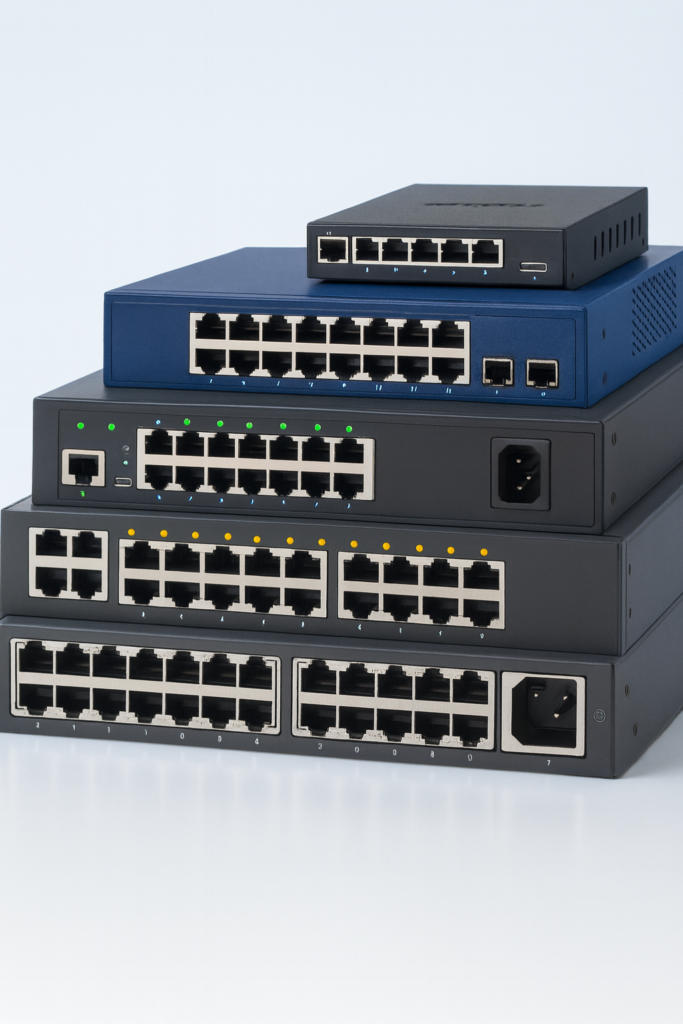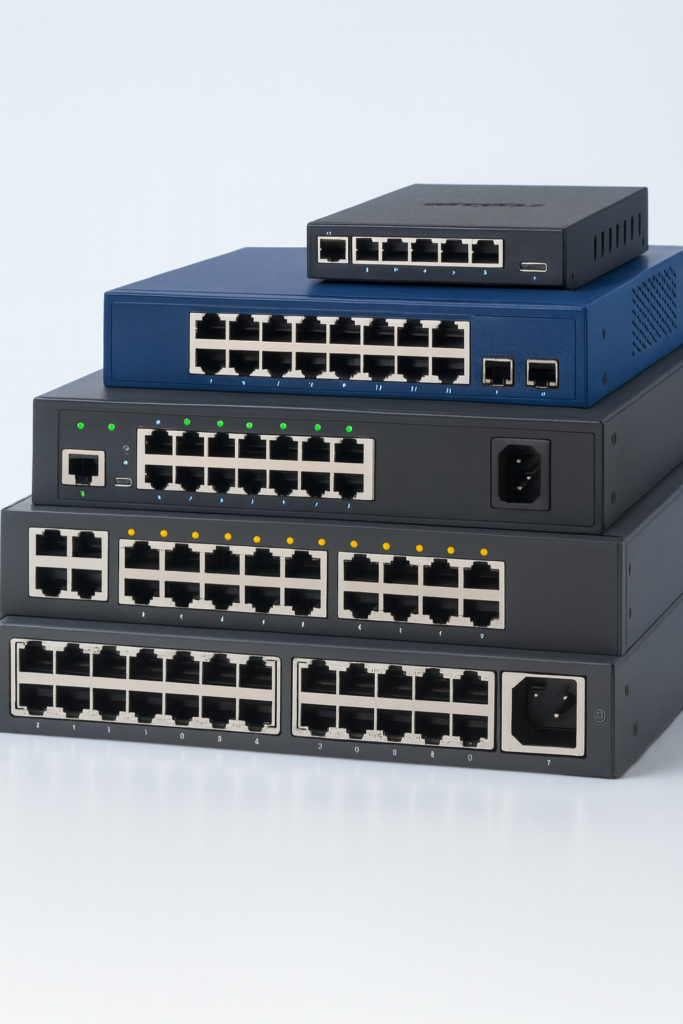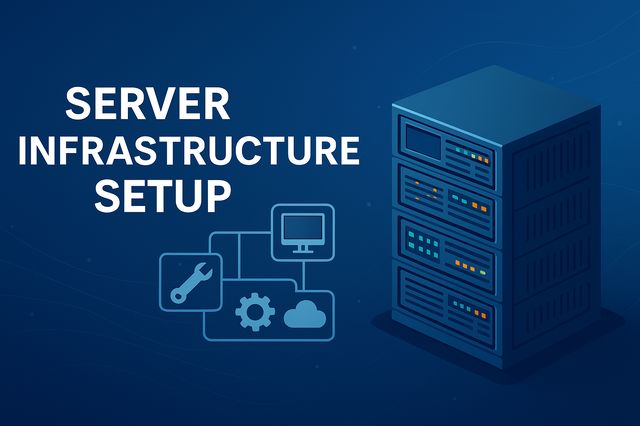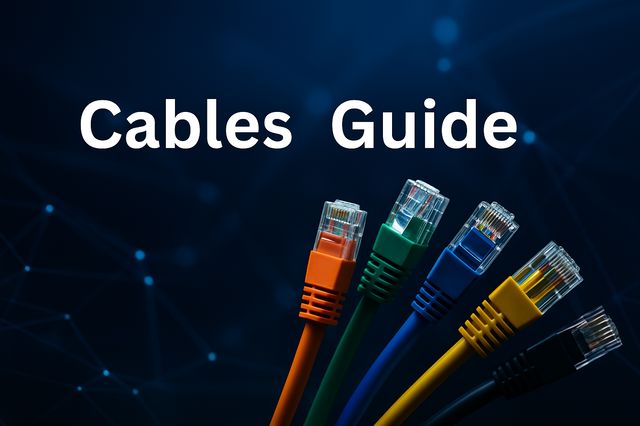Configuring a network switch for SMB security means transforming it from a basic traffic device into an identity-aware, Zero Trust access layer.
By applying VLAN segmentation, 802.1X network access control (NAC), and switch-hardening best practices (SSH, SNMPv3, BPDU Guard, DHCP Snooping, DAI), SMBs can eliminate internal threats, enforce least privilege, and monitor traffic effectively.
A properly configured switch becomes not just a connection point but a policy enforcement engine at the network edge.
A secure, segmented, Zero-Trust-ready access layer
A modern switch shouldn’t just move packets it should enforce policy at the edge. The mission is simple: (1) segment everything, (2) authenticate everyone and every thing, and (3) monitor continuously. This aligns with Zero Trust principles, which assume no implicit trust based on network location and require continuous authentication/authorization for users and devices.
Why segmentation + NAC matters
Segmentation (VLANs, ACLs, and where needed private VLANs) limits blast radius if a host is compromised and keeps noisy/legacy/IoT devices away from business-critical systems. Private VLANs give L2 isolation inside the same subnet useful for guest, POS, or IoT fleets.
Network Access Control (NAC) with 802.1X blocks unauthenticated devices and can assign dynamic policies per device/user (e.g., VLAN, ACLs) the instant they connect. It’s the foundation of identity-based access at the switch edge.

Baseline switch hardening checklist (works for any brand)
Harden once, template everywhere. The items below are “day-0” and “day-1” essentials for managed switches (Cisco, HPE Aruba, Juniper, Arista, etc.).
Secure management
Use SSHv2 (disable Telnet) and SNMPv3 only; apply management ACLs; prefer a dedicated mgmt VRF/port and NTP with authentication. Cisco and Aruba hardening guides explicitly call for SNMPv3 and management-plane protection.
Keep CDP/LLDP for visibility, but disable CDP/LLDP on untrusted/user-facing ports you don’t need. (CDP is proprietary; LLDP is open/IEEE 802.1AB.) Past CDP flaws underscore the value of limiting its scope.
Spanning Tree protections
Enable PortFast/edge on user ports and enforce BPDU Guard so an accidental loop or rogue switch doesn’t take down your LAN. Add Root Guard on access ports that must never become root.
Storm control & rate-limits
Apply storm control for broadcast/multicast/unknown-unicast on access interfaces to suppress traffic floods; set thresholds conservatively and monitor.
DHCP security
Turn on DHCP Snooping globally; trust only uplinks toward legitimate DHCP servers; add per-port rate limits. Then enable Dynamic ARP Inspection (DAI) to stop ARP spoofing—DAI relies on the Snooping binding table.
Port security (edge hygiene)
Limit MAC addresses per access port; consider sticky MAC for fixed devices (printers, POS) and err-disable on violation—with sane recovery timers.
Visibility & forensics
Mirror traffic via SPAN/RSPAN for packet capture/IDS where needed. For lightweight, always-on visibility, enable sFlow/NetFlow exports to your collector/SIEM. Log to syslog, and monitor via SNMPv3.
Encrypted links (optional but powerful)
Where supported, use MACsec (802.1AE) to encrypt switch-to-host or switch-to-switch links—particularly for uplinks leaving secure wiring closets.
Pro tip: Build interface templates (a.k.a. profiles) for user ports (PortFast+BPDU Guard+storm control+802.1X) and uplinks (trusted DHCP, no PortFast, QoS, etc.). Push at scale with your vendor’s automation.

Segmentation that works | VLANs, ACLs & private VLANs
VLANs: Separate staff, servers, voice, guests, IoT, management. Treat inter-VLAN routing as a controlled security boundary.
Routed ACLs (RACLs) on SVIs enforce policy between VLANs (inter-VLAN). Example: clients to servers allow only necessary ports; deny everything else.
VLAN ACLs (VACLs) filter within a VLAN (intra-VLAN) useful to block lateral movement or to steer traffic to monitoring tools; they apply to bridged and routed packets inside that VLAN.
Private VLANs (PVLANs) provide L2 isolation inside one IP subnet ideal for kiosk/guest/IoT fleets that only need the gateway or a specific server. Use isolated or community secondary VLANs under a primary VLAN.

Practical pattern (small office)
VLAN 10 Users → SVI 10 with RACL allowing DNS, DHCP, specific app ports to Servers; block SMB to non-IT; deny east-west.
VLAN 20 Servers → tight inbound allow-list only.
VLAN 30 Voice → QoS trust + call control only.
VLAN 40 Guest → Internet-only egress at firewall.
VLAN 50 IoT → PVLAN isolated; permit only to proxy/broker.
VLAN 99 Mgmt → OOB/mgmt VRF only, locked by ACLs.
Strong edge access control | 802.1X NAC done right
The gold standard is 802.1X on every user-facing port, backed by a RADIUS policy engine. Use EAP-TLS certificates where possible; fall back to MAB (MAC Authentication Bypass) only for legacy/agentless devices ideally with restricted roles.
Design essentials
Phased deployment: start in “monitor” (open) mode to discover/auth flows; then move to low-impact, then closed mode. Change of Authorization (CoA) lets the RADIUS/NAC server change a device’s role dynamically after posture checks.
Dynamic policy: return VLAN assignments and/or downloadable roles/ACLs per identity. Aruba calls these Downloadable User Roles (DURs); similar concepts exist across vendors.
Guest & remediation VLANs: unauthenticated/failed posture devices land in walled gardens with only what they need (e.g., captive portal).
Supplicants: Windows/macOS can be centrally configured (e.g., Intune/NPS/AD CS) to deploy wired 802.1X profiles and certs at scale.
Tooling (no vendor lock-in implied)
Cisco ISE (policy engine for wired/wireless; integrates with SDA, profiling, TACACS+ for admin).
HPE Aruba ClearPass (role-based access with DURs; “OnConnect” for non-802.1X ports).
Juniper Mist Access Assurance (802.1X & MAB, cloud-managed NAC).
Fortinet FortiNAC (802.1X integration and wired device control).
Tie it back to Zero Trust: NAC gives you identity and posture at the edge; segmentation applies least privilege; continuous monitoring watches behavior.

Vendor landscape at a glance (no “winner,” just options)
Cisco Broad feature set across Catalyst: mature 802.1X, DHCP Snooping+DAI, VACL/RACL, SPAN/RSPAN, MACsec (host and switch uplinks). Works with ISE for identity-driven policy.
HPE Aruba Networking Strong role-based enforcement (DURs) with ClearPass; extensive AOS-CX hardening and MACsec on several CX families.
Juniper Access Assurance for cloud-managed NAC; clear docs for BPDU protections and sFlow; EX/QFX offer robust L2/L3 and telemetry.
Arista Data-center-grade EOS with sFlow everywhere; clean automation; great when you need high-density campus core/aggregation with consistent tooling.
Reality check: whichever brand you choose, you’ll use the same security building blocks above. Focus on operational fit (management, automation, licensing) more than feature bingo.

Because switches are the first line of defense between users and critical systems.
Without segmentation or access control, a single compromised device can expose the entire network. Hardening prevents lateral movement and enforces Zero Trust principles.
Disable Telnet, use SSHv2 only
Use SNMPv3 and limit management access via ACLs
Enable BPDU Guard, Root Guard, and PortFast on edge ports
Apply DHCP Snooping and Dynamic ARP Inspection (DAI)
Implement 802.1X NAC for authenticated access
Mirror traffic for SIEM visibility and enable sFlow/NetFlow exports
VLANs isolate traffic by role or device type (e.g., Staff, Server, IoT, Guest).
Combined with Routed ACLs (RACLs) and Private VLANs, segmentation limits attack scope and ensures least-privilege connectivity between zones.
802.1X authenticates each user or device before network access.
Paired with RADIUS or NAC platforms (Cisco ISE, Aruba ClearPass, FortiNAC), it enforces dynamic policies granting access only to verified, compliant identities.
Use interface templates or configuration profiles for each port type (user, uplink, IoT).
Centralize management through automation tools or cloud dashboards from Cisco, Aruba, or Juniper to push consistent policies.
Cisco Catalyst: full NAC, VACL, DAI, MACsec
HPE Aruba CX: downloadable roles and strong telemetry
Juniper EX/QFX: robust 802.1X, BPDU protections, sFlow
Arista EOS: automation and telemetry at scale
All share the same Zero Trust security fundamentals.
Create VLANs for users, servers, and guests.
Enable BPDU Guard, DHCP Snooping, and DAI.
Use SSH, disable Telnet.
Roll out 802.1X in monitor mode before enforcing it.
This approach strengthens the network without disruption.
References
HPE Aruba – Aruba Switch Configuration
Juniper – Junos OS Configuration Basics
Netgear – Managed Switch Software Setup Manual
Fortiswitch – FortiSwitch features configuration


